2 July 2020,
We decided that two layers on the front yard Coral Bark Maple was enough. So the other candidate was a Acer Circinarum, “Pacfic Fire”, wuth the test on a branch I-was going to prune anyways. Certainly not prime for bonsai, but what the hey, I know a guy with a farm that would love this tree.
Test: The test is to see if the Skirt Style Airlayer will produce a decent airliner in summer in 4-6 weeks. No RadialDisc or other contraptions will be used.
Variables
1. I’m still a rookie and this is my 6th airlayer and one has failed and needed to be redone. Ugh!
2. It’s the Pacific NW and we’ve had late rain storms, up to today. However the position of the airlayer is facing SSW.
Weakness in the test
1. Only one trial. Regretfully thats all I have bandwidth for right now.... It’s back to pressure washing after this write up!
Procedure: Standard radial airlayer technique, with the exception of top skirt flaps with backing rings being substituted instead of a smooth top radial cut.
Important note: I actually tested this technique on the failed Coral Bark Maple airlayer ahead of time and learned a valuable lesson. Don’t use wide skirt cuts as the bark will fracture above the skirt with a wide cut, where it is less likely with a narrow skirt cut. Also, don’t manipulate the skirt a lot when doing this technique.... maybe this is why few people use it, it’s tricky to insert the ring. Dunno about stones. However, I kept envisioning myself running up and down the ladder getting stones that were falling out as I tried to manipulate the backing ring.
Here’s the key steps
Selecting the site - The spot just below where the two branches join looks good to me.
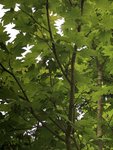
Cutting bottom radial bark strip - I wanted to have room to scrape off the cut and couldn’t see trying this with the skirt flaps. The is the procedure recommended by Pieter Loubser anyways, Peter Chan shows just cutting the flaps off the bottom radial cut.

Cutting skirt strips. Making narrow strips really helped here!

Inserting backing ring - I made this out of 2.5 aluminum wire. It seemed loose, so I added a second ring, which helped a lot with the slipping.
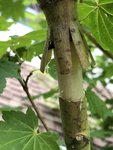
I ran into an issue putting in the first ring as the darn flaps kept closing up, preventing me from pushing up the ring all around. So I dug into my toolbox a found a 90* pick, which helped immensely.
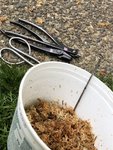
Gently pack Sphagnum under skirts to prevent air gaps.
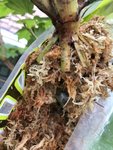
Finish packing the bottom and top. Make at least the size of grapefruit, or a little smaller than a Clincher softball! Close up.
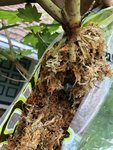

and Bob’s your Uncle! Any thoughts about this operation?
Cheers!
DSD sends








